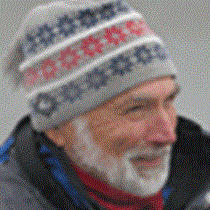We cruised south in the early morning into a spectacular sunrise that transformed a band of low clouds at the horizon into a stunning display of pinks on the undersides of the gray background. The sun broke through as a brilliant orange orb that lit Friar Rocks or Land’s End with warm yellow light. These large masses of granite are probably the most commonly photographed and admired point in all of “Baja.” This is the place to see fishing boats, sightseeing craft, jet skis, and cruise ships. It’s no wonder this location is so popular with the tourist town of Cabo San Lucas, ideal weather, and beautiful scenery. The sardine cannery from John Steinbeck’s Log from the Sea of Cortez is still identifiable now as a dilapidated concrete structure that visitors see when they enter the boat harbor. We passed it all by on our way to San José del Cabo, a nicer, classier town a short distance along on the peninsula.
San José del Cabo is great to explore. Trees and shrubs line the streets full of shops with tasteful art, unique clothing, bizarre curiosities, and friendly people. The Estero de San José offers a superb urban waterway containing a good diversity of birds and plants along a paved walk. About 30 birders enjoyed the avian delights that this little estuary provided. We saw all of the Baja California endemics, those found only in the local area and nowhere else in the world. They included the Belding’s yellowthroat, gray thasher, and Xantus’s hummingbird. A reddish egret (pictured) chased fish, a snipe foraged in the mudflats, and clapper rail appeared briefly. We also spotted numerous shorebirds, waterfowl, and orioles.
As we cruised around the tip of the peninsula, we found many groups of competitive male humpbacks and several cows and calves. A few were near offshore seamounts called the Gorda Banks, but more were ten miles east of there. We followed about seven whales that surfaced quickly and rose higher out of the water than normal. The photo shows a whale with his mouth full of water to most likely make himself look larger. You can see some of his baleen as he forces water out in this splash-filled image. One of the other males had a red, bloody dorsal fin where he had been struck by an opponent. We also watched a cow and calf that had two escort males following them closely. Humpbacks are noted for these types of behaviors here. We were fortunate to be able to watch these animals at the surface.
The winds and small swells from the north rocked us asleep with thoughts of the day’s adventures in our minds.







